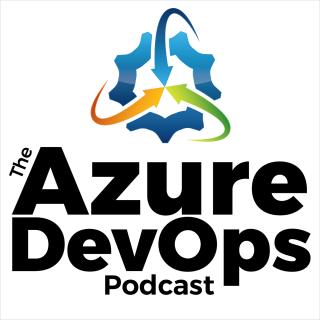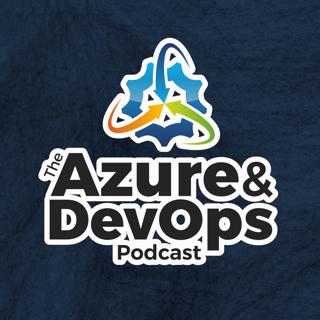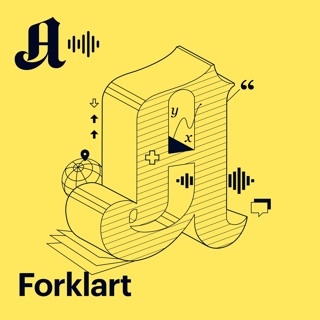
Steve Smith: .NET 8 and Architecture - Episode 276
Steve works with companies that want to avoid the trap of technical debt by helping their teams deliver quality software quickly. Steve and his team at NimblePros have been described by clients as a “force multiplier,” amplifying the value of existing development teams. Steve’s client list includes Microsoft, Quicken Loans, Celina Insurance, and many other satisfied customers. He also offers career coaching to developers through DevBetter.com. Steve has been recognized as a Microsoft MVP for over 20 years. Topics of Discussion: [4:24] Steve’s path into development. [5:14] How writing testable software became a passion of Steve’s. [7:09] Which parts of the .NET release stood out the most to Steve? [7:41] .NET Aspire. [12:26] Making local development easier. [14:05] Steve believes developers should be capable and comfortable writing unit tests for their software and writing unit-testable code. [15:27] Dependency inversion principle. [16:40] Thinking of interfaces as describing the “what” and implementations as describing the “how.” [17:57] A few other items that Steve is also excited about in C# 12. [20:58] Class level parameters in C#. [25:59] Managing dependencies in distributed systems. [28:47] The PACELC Principle. [31:08] The trade-offs of using microservices, including the potential for inconsistent data and the need for coordination between services. [36:34] AI’s impact on developer productivity. [41:46] The importance of understanding AI’s limitations. Mentioned in this Episode: Clear Measure Way Architect Forum Software Engineer Forum Programming with Palermo — New Video Podcast! Email us at programming@palermo.net. Clear Measure, Inc. (Sponsor) .NET DevOps for Azure: A Developer’s Guide to DevOps Architecture the Right Way, by Jeffrey Palermo — Available on Amazon! Jeffrey Palermo’s Twitter — Follow to stay informed about future events! Clean Architecture .NET Conf 2023 Steve Smith: Domain Driven Design Steve Smith Twitter Dependency Injection Pluralsight course on SOLID Pacelc Principle Want to Learn More? Visit AzureDevOps.Show for show notes and additional episodes.
18 Des 202343min

Clark Sell: Developer Education and Networking - Episode 275
From humble beginnings as a mechanic who later became a software engineer/architect/now business owner and who has built software for some of the biggest companies on the planet, Clark’s passionately unapologetic on a mission to create the most inclusive, tech-savvy, family-friendly community of geeks on the planet. Fueled by creativity, Clark invests his time partnering with companies on how to foster their communities while helping them solve business problems through innovative technology solutions and common sense. Topics of Discussion: [2:45] What events in Clark’s career shaped and steered him in his current direction? [4:29] Developmentor, and how Clark got into user groups and events. [6:54] What should we know about That Conference? [9:52] The growing culture of That Conference. [12:22] The pros and cons of small tech conferences. [12:41] That Conference is only a team of four. [13:50] The importance of in-person connections and bonding at conferences. [14:56] We want to meet other coders! How That Conference gets people together where the conversation is perfectly aligned. [19:09] What was the first conference Clark attended? [25:06] Tips for both newbies and return attendees for getting the most out of attending That Conference. [26:09] Open spaces provide a place for unstructured conversation anytime, anywhere. [28:40] Making the most of networking when the “density of nerds” is extremely high. [28:55] At conferences, it’s about the collective coming together. [30:44] How can someone learn more and get involved with That Conference? Mentioned in this Episode: Clear Measure Way Architect Forum Software Engineer Forum Programming with Palermo — New Video Podcast! Email us at programming@palermo.net. Clear Measure, Inc. (Sponsor) .NET DevOps for Azure: A Developer’s Guide to DevOps Architecture the Right Way, by Jeffrey Palermo — Available on Amazon! Jeffrey Palermo’s Twitter — Follow to stay informed about future events! Clark Sell on LinkedIn Clark Sell on Twitter That Conference hello@thatconference.com Want to Learn More? Visit AzureDevOps.Show for show notes and additional episodes.
11 Des 202336min

Daniel Roth: Blazor with .NET 8 - Episode 274
Daniel Roth is a Principal Product Manager on the ASP.NET team working on ASP.NET Core, Blazor, and other web features. He has previously worked on various parts of .NET, including System.Net, WCF, XAML, and ASP.NET. His passions include building frameworks for modern Web frameworks that are simple and easy to use. Topics of Discussion: [3:08] Daniel talks about joining Microsoft fresh out of college and shares a brief history of how his career has evolved. [4:10] Working on Blazor with Steve Sanderson. [5:42] Different career paths at a company that sells software products. [7:20] How product managers blend technical and business aspects of software development. [10:40] There’s nothing “normal” about Blazor. [12:25] Why Daniel would recommend Blazor. [15:34] The initial choice in building between Blazor server apps and web assembly apps, and how we have evolved past these two project template models. [16:29] Blazor components can be rendered in different ways depending on the render mode chosen. [27:15] The importance of maximizing choices in the future for an application. [30:28] Azure bill updates. [33:15] Server-side rendering, stateful vs stateless models, and new features in.NET 8. [37:00] Other exciting Blazor news and features, such as enhanced navigation. [39:55] Improvements for authentication and identity. Mentioned in this Episode: Clear Measure Way Architect Forum Software Engineer Forum Programming with Palermo — New Video Podcast! Email us at programming@palermo.net. Clear Measure, Inc. (Sponsor) .NET DevOps for Azure: A Developer’s Guide to DevOps Architecture the Right Way, by Jeffrey Palermo — Available on Amazon! Jeffrey Palermo’s Twitter — Follow to stay informed about future events! Ep #204 with Daniel Roth BlazorMVC BlazorMVC Nuget Want to Learn More? Visit AzureDevOps.Show for show notes and additional episodes.
4 Des 202344min

Maarten Balliauw: Developer Tools - Episode 273
Maarten loves building web and cloud apps. His main interests are in .NET web technologies, C#, and application performance. He is Developer Advocate at JetBrains and created SpeakerTravel, a tool to help conference organizers. Maarten is a frequent speaker at various national and international events. In his free time, he brews his own beer. Topics of Discussion: [4:34] The mindset difference between developing software applications for everyday use versus developer tools, and how it affects the programming process. [5:40] What is JetBrains, and why should .NET devs care? [6:44] IDE stands for integrated development environments. [9:01] JetBrains announcing Rider. [10:31] Essential software development patterns for desktop applications. [13:35] What does the code generally look like? Is it .NET events? Is it observer pattern? [15:54] Maarten talks about the approach of creating general-purpose business applications with modular components, making development and maintenance more efficient. [18:35] TeamCity, a continuous integration (CI) server used internally and for building products. [19:50] The concept of a safe merge. [21:11] JetBrains Toolbox. [21:53] How Maarten compartmentalizes tests. [24:44] Static analysis tools for code quality and customization. [27:38] Duplicate code identifier. [30:41] VS Code. [32:13] What are some interesting things to look out for in the future? Mentioned in this Episode: Clear Measure Way Architect Forum Software Engineer Forum Programming with Palermo — New Video Podcast! Email us at programming@palermo.net. Clear Measure, Inc. (Sponsor) .NET DevOps for Azure: A Developer’s Guide to DevOps Architecture the Right Way, by Jeffrey Palermo — Available on Amazon! Jeffrey Palermo’s Twitter — Follow to stay informed about future events! Maarten’s Blog Rider Resharper Building a .NET IDE with JetBrains Rider NDepend Visual Studio for Mac Retirement Announcement .NET Annotated Monthly — Sept 2023 Want to Learn More? Visit AzureDevOps.Show for show notes and additional episodes.
27 Nov 202335min

Scott Hunter: .NET8 - Episode 272
Scott is the Vice President of Product for Azure Developer Experience. He builds all the .NET tools for Azure. Topics of Discussion: [2:20] Scott talks about joining Microsoft in 2007 and a few of his most memorable milestones and moments. [5:55] .NET Aspire [6:46] The 3‒4 items in .NET that are important for developers to focus on. [12:02] Improving.NET performance through AOT compilation. [12:22] Introducing a self-contained application. [19:09] Advancements in .NET technology and its applications. [22:11] AI technology and its integration into various products. [22:12] The generative pre-trained to chat transform (GPT). [24:19] Semantic Kernel and open SDK in .NET. [30:12] Aspire, a tool for simplifying web development. [38:25] What Scott calls the orchestrator app. [43:27] Scott’s excitement for the multi-part cloud applications coming together. [45:08] The great feedback that is already rolling in. Mentioned in this Episode: Clear Measure Way Architect Forum Software Engineer Forum Programming with Palermo — New Video Podcast! Email us at programming@palermo.net. Clear Measure, Inc. (Sponsor) .NET DevOps for Azure: A Developer’s Guide to DevOps Architecture the Right Way, by Jeffrey Palermo — Available on Amazon! Jeffrey Palermo’s Twitter — Follow to stay informed about future events! Ep #211 with Scott Hunter Orchestrate Your AI with Semantic Kernel openai sdk in .NET Demystifying Retrieval Augmented Generation with .NET .NET Aspire .NET Conf Want to Learn More? Visit AzureDevOps.Show for show notes and additional episodes.
20 Nov 202347min

Martin Thwaites: Building Software for Production - Episode 271
Martin Thwaites is a Developer Advocate at Honeycomb, an o11y enthusiast, and a delivery-focused Developer from the UK. With over 20 years of experience in development in the .NET ecosystem, he’s worked with many companies on scaling up engineering teams and products. The past few years have been spent working on solving complex problems with some of the UK’s big names, including e-commerce retailers and credit lenders. Topics of Discussion: [2:42] Martin getting his start in testing. [5:55] What other products is Honeycomb similar to? [5:57] APM monitoring metrics. [9:05] O11y [9:30] The foundational elements of Honeycomb. [13:36] For smartphone applications, desktop, or mobile, what of these concepts are the same, and what’s different? [15:49] Tracing the unknown unknowns. [17:43] Where open telemetry comes in and shines. [28:04] Do you commit locally, group them up together and execute a push? [33:24] Moving TFS Code Base onto Git. [34:40] What TFS did right. [35:31] The minimum sets of testing and verification that need to go in this chain just to get people enough of a safety net. [35:43] Developer tests and Web Application Factory. Mentioned in this Episode: Clear Measure Way Architect Forum Software Engineer Forum Programming with Palermo — New Video Podcast! Email us at programming@palermo.net. Clear Measure, Inc. (Sponsor) .NET DevOps for Azure: A Developer’s Guide to DevOps Architecture the Right Way, by Jeffrey Palermo — Available on Amazon! Jeffrey Palermo’s Twitter — Follow to stay informed about future events! Martin Thwaites LinkedIn Martin on Twitter Martin.Net Honeycomb OpenTelemetry Want to Learn More? Visit AzureDevOps.Show for show notes and additional episodes.
13 Nov 202342min

Jeremy Clark: Design Patterns - Episode 270
Jeremy helps developers by sharing his struggles, mostly in technology, but also with being more social as an introvert, understanding learning potential, and playing banjo. He has worked as a corporate developer, as a Chief Improvement Officer at a startup, and as a contract developer. Currently, he teaches developers through online courses, workshops, tech articles, and conference talks. He spends most of his time in C# and has recently ventured into Go (Golang) and Rust (Rust lang) to explore some of his favorite topics: interfaces, delegates, concurrency, and parallel programming. You can see him speaking next at LIVE! 360 in Orlando, FL Nov 12‒17, 2023. Use promo code “Clark” to save $500 off your ticket. Also Oct 23rd at DevSpaceConf in Huntsville, AL. Design patterns are not just for architects. In fact, you already use Design Patterns but probably don’t know it. Observer, Facade, Iterator, Proxy — these are all patterns that allow us to better communicate our ideas with other developers. And once we understand the patterns, we can use solutions that people way smarter than we have already implemented. In this session, we’ll take a look at several Gang of Four patterns that we regularly use without realizing it. Don’t know who the Gang of Four is? Join us to find out. Topics of Discussion: [3:30] Jeremy talks about his foray into programming and the colleagues that helped him gain confidence. [6:44] Jeremy went from speaking at smaller user groups and code camps to global conferences. [7:35] The act of sharing gained expertise is what makes you an expert. [10:10] Design patterns and their relevance in development. [13:19] The importance of the Gang of Four book and Head First Design Patterns. [17:24] Iterator and the patterns that fall in that category. [20:43] Are we seeing classic patterns be redirected or are new ones taking shape? [23:05] The concept of abstraction. [24:10] The two states that developers fall into. [28:02] More about Jeremy’s testing philosophy and how it’s changed over the years. [29:26] What Jeremy prioritizes when helping other developers start a new codebase. [32:34] Where people can go for more education and information on these topics. Mentioned in this Episode: Clear Measure Way Architect Forum Software Engineer Forum Programming with Palermo — New Video Podcast! Email us at programming@palermo.net. Clear Measure, Inc. (Sponsor) .NET DevOps for Azure: A Developer’s Guide to DevOps Architecture the Right Way, by Jeffrey Palermo — Available on Amazon! Jeffrey Palermo’s Twitter — Follow to stay informed about future events! Jeremy Clark Twitter Jeremy Clark LinkedIn Jeremy Bytes Blog DevSpace Conf Want to Learn More? Visit AzureDevOps.Show for show notes and additional episodes.
6 Nov 202335min

Matthew Casperson: Platform Engineering - Episode 269
Matthew has loved technology since his first Commodore 64, and that passion remains to this day. His days have me integrating enterprise platforms with Octopus, writing guides and books for platforms like Kubernetes, blogging, and training my colleagues, testing bleeding edge open source projects, and contributing to various blogs. Matthew is a 5-star published author and has created solutions that Red Hat felt were worthy of being submitted for a patent. CEOs endorse his development skills. Although he calls himself a developer, Matthew is quite comfortable administering a Linux server, managing a MySQL database, deploying infrastructure with Ansible, reconfiguring a firewall, or just doing what needs to be done to get the job finished. To ensure that he is learning the industry's best practices, Matthew pushes himself to gain certification in technologies that he relies on, with Oracle proudly telling him “You are among the elite 1% of certified Java professionals who have gone on to achieve the Java Enterprise Architect certification.” Topics of Discussion: [3:36] Mike talks about some high points in his varied career. [6:33] What is platform engineering? [8:22] Most jobs fall into the category of DevOps. [10:58] The platform team is looking inward and trying to scale up the team members as opposed to scaling up the technology. [13:08] Has Matt seen any of the job boards coming out with how we need to hire a platform engineering director or platform engineering analyst? [15:08] What does Matt’s typical work day and work week look like? [17:02] Guiding customers into creating useful solutions in their own teams. [18:17] Have we figured out the difference between platform engineering and DevOps? [20:05] “Needless creativity.” [23:56] The importance of consistent feedback and improvement. [25:58] Developers have a $0 budget, but an unlimited time budget. [30:55] DevOps teams need to take dependencies seriously. [31:44] How we can standardize and automate some of those internal processes through platform engineering. [35:06] Dependabot. Mentioned in this Episode: Clear Measure Way Architect Forum Software Engineer Forum Programming with Palermo — New Video Podcast! Email us at programming@palermo.net. Clear Measure, Inc. (Sponsor) .NET DevOps for Azure: A Developer’s Guide to DevOps Architecture the Right Way, by Jeffrey Palermo — Available on Amazon! Jeffrey Palermo’s Twitter — Follow to stay informed about future events! Matt Casperson LinkedIn Octopus Enterprise Deployment Patterns Github.com/OctopusSolutionsEngineering/EnterprisePatternsReferenceImplementation/tree/main Want to Learn More? Visit AzureDevOps.Show for show notes and additional episodes.
30 Okt 202338min






















